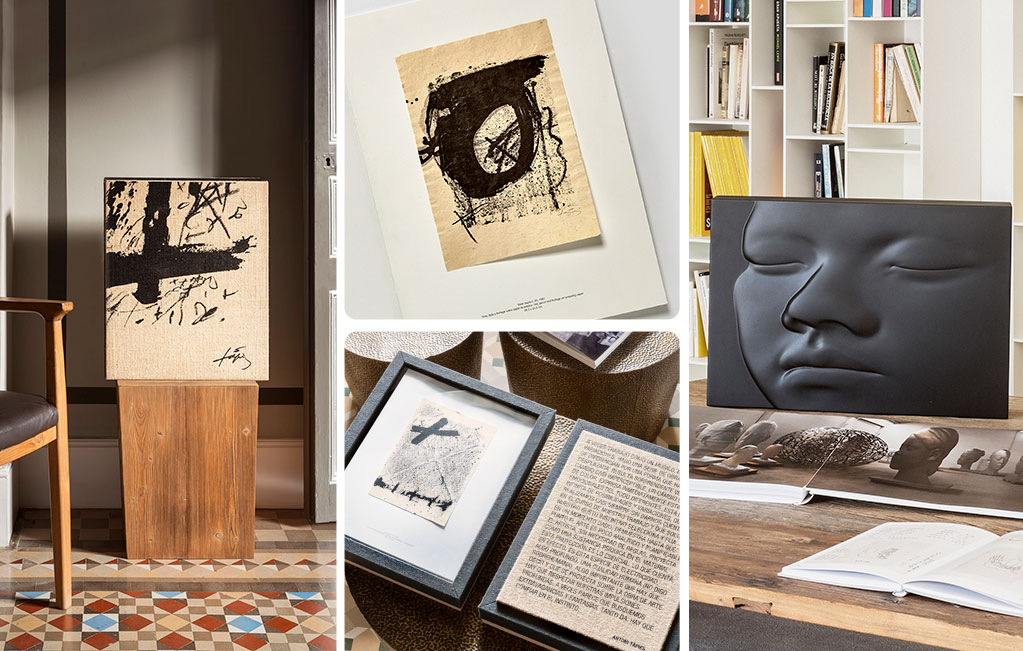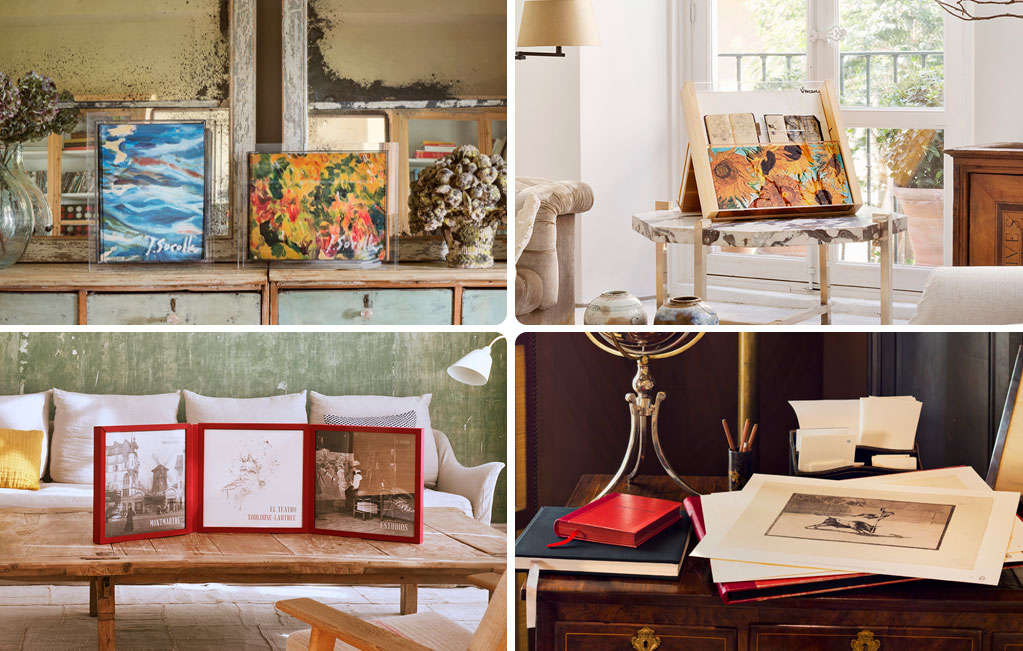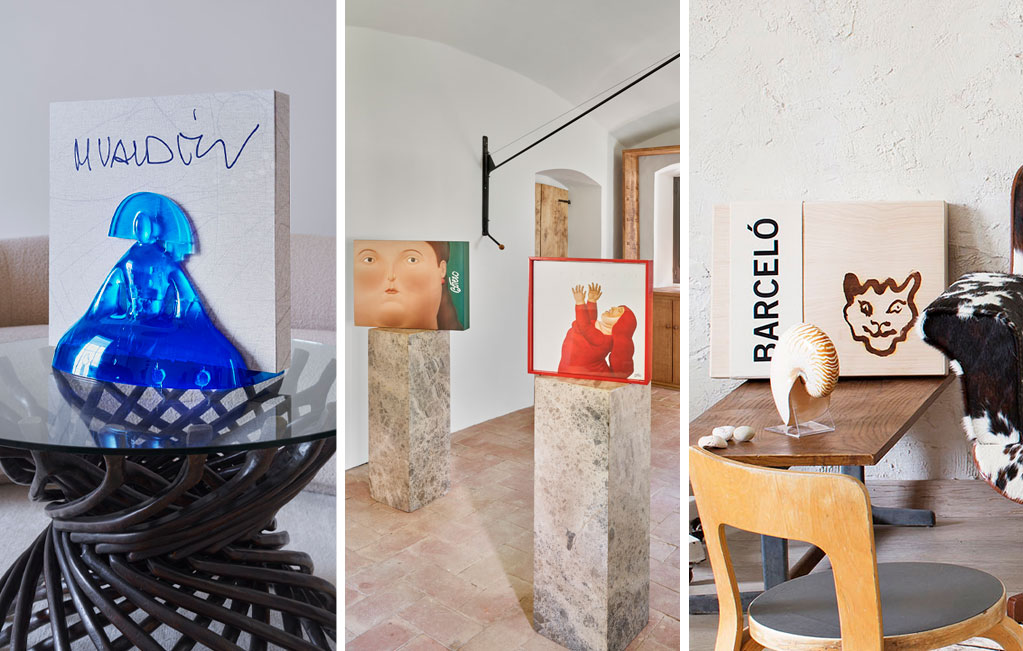ARTIKA: 20 Years Among Artists
For the 20th anniversary of the label, we celebrate the 21 artists who have made it possible, because when it comes to ARTIKA, it’s all about art.
Passionate, creative, and incomparable, these authors shape our journey with a shared commitment to art and high-quality, exclusive, and limited works. There’s no doubt about their role in art history, but what makes them special in ours?
The art of looking inward
The communicative power of art lies in its universality; Tàpies’ lies in questioning, in works like Sèrie negre, the preconceived visions of a society that believes art should reject ordinary ways or fear the color black. The artist translates them as if they were poetry, to show how the simplicity and darkness of the world do not oppose meaning but act as a neutral and open space for connection.
Plensa, on his part, values the inner world through a play of volumes and shapes. Personal discovery leads him to create; exhibiting the work means opening his mind to others, and, as a result, the audience reflects on its own. Jaume Plensa 61 explores this introspective exercise, presenting it not so much as a necessity but as an intrinsic condition of the human mind.

Incessant creation
Sorolla and Van Gogh go beyond their published works. The notebooks emerge from an unyielding pencil, as seen in La mirada de Vincent or Sorolla’s editions on landscapes and the sea. Driven by the need to immortalize memory, the Valencian artist portrays his family, while the Dutchman captures nature in all its forms. Time turns these drawings into vast repositories of memory, free of gaps due to the artists’ compulsive activity and absence of blank pages.
And if the Parisian cabarets didn’t rest, Toulouse did even less. His fascination with nightlife scenes full of music and color, as seen in The Theater, makes his work a testament to the cultural and urban life of the Belle Époque. On another note, Goya’s constant pictorial activity responds to his disillusionment with his political reality: in black and white, he depicts the polar extremes of human violence, present in La Tauromaquia or Los desastres de la guerra.

Dreamlike worlds
Dalí‘s fascination with Don Quijote is one of many that reveal his dreamer and visionary spirit and his way of understanding the world with absolute freedom, consolidating the utopia that governs his work. His illustration of Cervantes’ celebrated work or Los ensayos de Montaigne are examples of that close literary connection experienced firsthand in ARTIKA.
We also see how surrealism draws Miró through a passage of memories that ultimately becomes a map of his childhood. Alongside this naïve subconscious, symbols awake to revisit his work and solidify the most intimate Miró universe.
Beyond her social and political commitment, Frida Kahlo creates an unfiltered pictorial universe, where common reality mixes with her most intimate dreams. The Dreams of Frida Kahlo reveals how the range of these dreams transcends any metaphysical barrier, channeling, through her pencil or brush, her best fantasies as much as her most heart-wrenching moments.

Capturing Every Detail
It could take Antonio López decades to complete a work; Michelangelo would discard his creations at the slightest defect; Gaudí felt an imperative need to create a unique architectural language for each space; McCurry harnesses physical and mental strength to reach the ends of the earth in hopes of telling a story.
When art is not just a pastime but a raison d’être, the life and work of an artist can intertwine so closely that they become the same thing, with perfectionism blurring the dividing line.

Reading to Paint Between the Lines
Literature accompanies artists day by day, but for some, it’s also the water from which their work drinks. It’s not about changing the printed stories but rendering them in a new ink.
We observe La Celestina and Picasso converging in Suite 347, a work under which the painter titles 347 avant-garde engravings with a heavy erotic charge that delve into the characters of the classic.
Rembrandt, in turn, consolidates a pictorial subgenre with his fondness for religious scenes, taking the Bible and transforming it, through his art, into a universal narrative.
For his part, Saura views the writer-artist relationship as a spiritual bond forged by illustration. When a book resonates deeply (such as El Criticón), the painter feels the “desire to accompany it through images,” even if it doesn’t need them.
Lita Cabellut also faces the challenge of decoding a classic in her edition with ARTIKA, Bodas de sangre (Blood Weddings) by Federico García Lorca, transforming this theatrical tragedy “within blows of love.”
Or take Chillida, for whom wordplay implies giving words volume and form. The Spiritual Canticle of San Juan de la Cruz now appears reflected in drawings that pay tribute to it.

The reinterpretation of art
Artists do not only speak to themselves or communicate with an audience; there is also a dialogue between masters or with artistic movements from other times. These are silent conversations only appreciated in the pieces, where the derivative may use a completely different language from the original.
We see it with reinterpretation Valdés and his sculptural version of Velázquez’s meninas; Botero and the configuration of a new canon of the female body; or Barceló and his watercolor of the cave paintings in Chauvet Cave.
